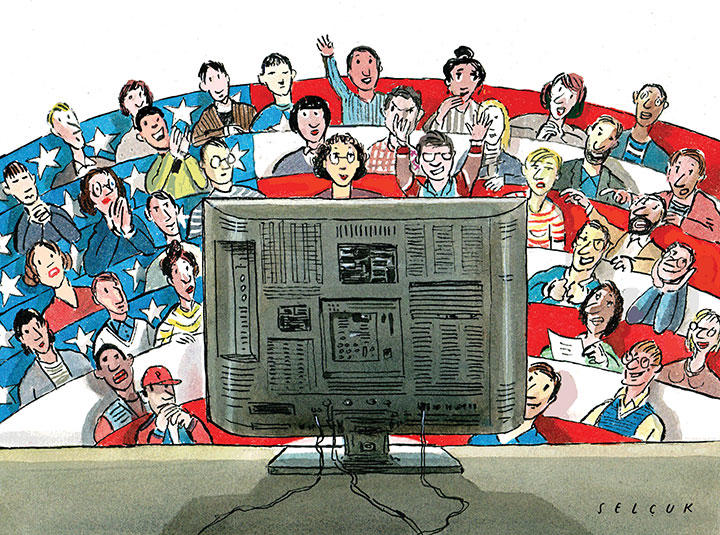Putting Aside Papers and Problem Sets, Campus Tunes In to Candidates’ Debate

Across campus, there was a sense of importance attached to the first presidential debate between Donald Trump and Hillary Clinton as students carved out time from their academic work. Some stayed in to watch with their roommates, the sounds of the debate filtering out of dorm-room windows and doors.
At the Frist Campus Center, some students multitasked and did their class readings as the candidates squared off on the television monitor. A Whig Hall viewing event with popcorn, pretzels, and cookies drew about 90 students; about 40 listened in quiet concentration at a Nassau Weekly party in Patton Tower.
“If you don’t [watch the debate], it’s like, why?” said Danielle Stephenson ’20, who was watching in her Fisher Hall common room with a fellow zee, Lyra Katzman ’20.
In a packed Richardson Auditorium, the sentiments of the audience were clear: pro-Clinton. When she called for equal pay for women’s work, the crowd broke out in cheers; when she slammed Trump’s “trumped-up, trickle-down” economics, the crowd roared and clapped. Rowdy laughs broke out when Trump decried Clinton’s ads against him, saying, “It’s not nice, and I don’t deserve that.”
For some students, watching the debate was a class assignment. Classics professor Andrew Ford, who is teaching a class this fall titled “Rhetoric: Classical Theory, Modern Practice,” required his students to evaluate the candidates’ rhetoric.
Megan Laubach ’18 said she noticed how Clinton referred to Trump as “Donald” throughout the debate, while he referred to her as “Secretary Clinton.” Jay Sourbeer ’18 said Clinton seemed more at ease, compared with Trump’s sniffling and taking “a million sips of water.”
Discussing the debate in Ford’s class the next day, students evaluated the candidates’ logos (appeal to logic), ethos (appeal to ethics), and pathos (appeal to emotion). Sourbeer said “it seemed like the debate really had nothing to do with logos, with actual arguments.”
This is a revised version of a column from the Oct. 26, 2016, issue.












No responses yet